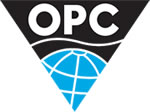
88 Energy has announced a maiden internal Prospective Resource estimate for the Canning Prospect of 283 million barrels of oil (MMbbls)[1],[2] (net mean, unrisked) at Project Leonis in Alaska (100% working interest and a 16.67% State Royalty).
Highlights
- Maiden Internal Prospective Resource Estimate for the Canning Prospect:
- Material new Prospective Resource declared for the Canning Prospect at Project Leonis.
- Total estimated net mean Prospective Resource of 283 MMbbls1,2 recoverable from the Canning Formation.
- Unrisked net 3U (high) 469 MMbbls, 2U (best) 259 MMbbls, and 1U (low) 136 MMbbls estimated1,2.
- Now a Multi-Reservoir Opportunity of Scale: Combined internal gross mean Prospective Resource estimate across the Canning and USB Prospects of 798 MMbbls, with (664 MMbbls net mean prospective resource to 88E (refer Tables 1 and 2 on page 8).
- Planning underway for Tiri-1 Exploration Well: Currently scheduled for H1 CY26, targeting both the Canning and USB Prospects.
- Well Location Selection Underway: Leveraging results from the quantitative interpretation study, targeting completion in Q1 CY25, followed by permitting and operational planning.
- Targeting Shared Well Cost: 88 Energy's 100% working interest provides strong potential to secure a large proportionate carry-on completion of the active farm-out process, ahead of any future drilling event.
- Project Leonis Represents a Highly Attractive Exploration Opportunity: Strategically located adjacent to the major pipeline system (TAPS) and the Dalton Highway, significantly enhancing any future development and commercialisation potential.
Managing Director, Ashley Gilbert, commented:
'We are extremely pleased to announce the maiden, internally estimated Prospective Resource estimate for the Canning Prospect, which closely follows the successful bid for four new leases at Project Leonis in December 2024 with award expected in the 1st half of 2025.
The identification of the Canning Prospect comes after an extensive review of data, including newly reprocessed and interpreted Storms 3D seismic data, and the outcome of the recently completed quantitative interpretation study (rock physics, AVO and seismic inversion). This work has confirmed significant prospectivity at both reservoir intervals.
Importantly, advanced seismic techniques, such as the use of geophysical AVO technology, have played a critical role in recent drilling successes across the North Slope of Alaska. This technology has been employed successfully worldwide; and in Alaska has delivered major discoveries by Oil Search (now Santos), Repsol, Armstrong and ConocoPhillips when targeting the Nanushuk Formation. Similarly, 88 Energy utilised these techniques to great effect with the Hickory-1 discovery at Project Phoenix.
The Tiri-1 well will be optimally located to test both the Canning and USB Prospects, providing shareholders with a multi-zone exploration opportunity of considerable scale. The timing of the Tiri-1 exploration well is contingent on securing a farm-out partner, and with our 100% working interest in Project Leonis, we believe there is significant potential to secure a large proportionate carry on any future well.
Looking ahead, our focus is firmly on advancing the Tiri-1 well at Project Leonis scheduled to drill in Q1 2026 as well as finalising funding to deliver a horizontal well test at Project Phoenix'.
Project Leonis: A Strategically Located Multi-Reservoir Opportunity of Scale
Material Prospective Resources have now been estimated within the Canning Formation (Canning Prospect) and Upper Schrader Bluff (USB Prospect) reservoirs in the Project Leonis acreage.

The new Canning Prospect Prospective Resource estimate follows a detailed review of an extensive data suite, including the reprocessed and interpreted Storms 3D seismic data. This review identified a significant geological feature attributed to basin-wide erosion during the Mid Campanian, which created canyon-like scours in the Hue shale, providing considerable accommodation space for high-energy, toe-of-slope turbidite sequences.
These turbidites form a thick reservoir succession of up to 336 feet thick, covering an area of approximately 43km2, highlighting the substantial scale of the prospect.

Notably, the Canning Prospect remains untested by offset wells in the immediate vicinity. However, oil shows, ("oil over shakers") and calculated pay have been observed at stratigraphic intervals in the Hemi Springs Unit 3 well (see Figure 3). The Canning interval at this well exhibited porosities of up to 28%, with reservoir quality within the canyon-like feature anticipated to be even higher. Similar high net-to-gross turbidites are being produced from Hue Shale scours in Conoco Phillips' Tabasco field, located just 23 miles to the northwest (see Figure 2).

Prospectivity Supported by Historical and Modern Data Interpretation
Historical data reinforce the compelling technical and commercial potential of Project Leonis. The Hemi Springs Unit 3 well, drilled in 1985, targeted deeper reservoirs than the Canning and USB Formations and without the benefit of modern seismic data, leading to overlooked low-resistivity oil pay. Re-evaluation of petrophysical data has since identified oil saturations within both the USB and Canning Formation, oil shows observed in the Hemi Springs Unit 3 mud log correlate with extensive areal mapped potential.
Modern advances in understanding low-resistivity pay have unlocked substantial reserves across Alaska's North Slope, as demonstrated by the Willow and Pikka fields. Similarly, 88 Energy's re-evaluation of legacy wells led to the successful drilling and testing of Hickory-1 in CY23-24. This approach has guided the evaluation of Project Leonis, leveraging both historical and modern data to identify and target untapped resources.
A comprehensive Quantitative Interpretation (QI) study, including rock physics, AVO and seismic inversion, commenced in Q3 24 and has now been completed. The primary objective was to identify anomalous responses within the Canning feature, while the secondary aim was to pinpoint "sweet spots" within the USB reservoir. Results from the AVO and inversion analysis confirmed significant prospectivity at both intervals, providing actionable insights for future well planning. See Figures 4,5 and 6.

Forward Program and Farm-Out Strategy
Project Leonis's strategic location, with proximity to existing infrastructure such as export pipelines and the Deadhorse services hub, enhances its commercial appeal. The project's multi-reservoir appraisal drilling opportunity targets 664 MMbbls of estimated net mean, unrisked Prospective Resources, (refer to page 8 for further details of Low, Best and High estimates, and page 1 for the Cautionary Statement).
88 Energy has engaged Fairweather to initiate planning and permitting for the Tiri-1 exploration well, which will target the USB and Canning reservoir zones. Drilling is contingent on securing a farm-out partner, with Llamas and Bannister Energy Advisors Ltd (LAB) recently appointed to manage an active, relaunched and expanded farm-out process. The expansion of Project Leonis's acreage and the addition of the Canning Formation reservoir opportunity underpins its status as a cornerstone asset in 88 Energy's portfolio.
Prospective Resources Estimate and Estimation Methodology
88 Energy has determined Prospective Resources using probabilistic methods, which involved interpreting top and base pay from the Hemi Springs Unit 3 petrophysical model and integrating reprocessed 3D seismic data. Key parameters, such as potential pool area, thickness, porosity, hydrocarbon saturation, oil expansion and recovery factors were modelled on a probabilistic low, mid and high basis using Monte Carlo analysis.
The Prospective Resources have not been adjusted for phase risk or chance of development, with a "probable" qualitative assessment of development upon geological success, given the project's proximity to key infrastructure.
All Prospective Resource estimates included in this announcement adhere to the definitions and guidelines set forth in the Petroleum Resources Management System (PRMS) as revised in June 2018 by the Society of Petroleum Engineers. The PRMS defines Prospective Resources as those quantities of petroleum which are estimated, as of a given date, to be potentially recoverable from undiscovered accumulations. The evaluation date for the Prospective Resources stated within this document is 29 January 2025. Further details are available in the disclaimers attached as Schedule 1 of this ASX release.
|
Project Leonis: Alaska North Slope |
Unrisked Gross Prospective Oil Resources (MMbbls)3,4 |
||||
|
Prospect (Probabilistic Method) |
Low (1U) |
Best (2U) |
High (3U) |
Mean |
COS2 |
|
USB Prospect* (Upper Schrader Bluff) |
200 |
406 |
806 |
458 |
32% |
|
Canning Prospect (Canning Formation) |
163 |
311 |
563 |
340 |
33% |
|
Total Prospective Resources |
363 |
717 |
1369 |
798 |
|
|
Project Leonis: Alaska North Slope |
Unrisked Net Entitlement to 88E1 Prospective Oil Resources (MMbbls)3,4 |
||||
|
Prospect (Probabilistic Method) |
Low (1U) |
Best (2U) |
High (3U) |
Mean |
COS2 |
|
USB Prospect* (Upper Schrader Bluff) |
167 |
338 |
671 |
381 |
32% |
|
Canning Prospect (Canning Formation) |
136 |
259 |
469 |
283 |
33% |
|
Total Prospective Resources |
303 |
597 |
1140 |
664 |
|
* Formerly referred to as the Tiri Prospect. Refer to announcement dated 4 June 2024.
1. 88 Energy net resources have been calculated using a 100% working interest and a 16.6667% royalty.
2. COS represents the geological chance of success as assessed by 88 Energy, taking into account and risking of such factors as source, timing/migration, estimated reservoir and quality, mapped closures and seal effectiveness.
3. Prospects are subject to a phase risk (oil vs gas). Chance of oil has been assessed as 100%. Phase risk has not been applied to the unrisked numbers.
4. The Prospective Resources have not been adjusted for the chance of development. Quantifying the chance of development (COD) requires consideration of both economic and other contingencies, such as legal, regulatory, market access, political, social license, internal and external approvals and commitment to project finance and development timing. As many of these factors are not yet known, 88 Energy has qualitatively assessed the chance of development as "probable" upon geological success given the strategic location of the acreage position adjacent to TAPS and key infrastructure.
Source: 88 Energy












